In central London, a robot called Emma is being used to make the gruelling job of building lift shafts faster, safer and more precise. Tom Lowe visits the site of Skanska’s 105 Victoria Street to see if the device is all it’s cracked up to be
I am on a hoist halfway up a lift shaft watching a robot staring intently at the contents of a toolbox. This goes on for some time. “It’s thinking,” my tour guide explains.
Several minutes pass. Suddenly the robot arrives at a decision, selects a bolt and then swivels madly into the shaft, extending its single arm with unnerving speed before proceeding to drill into the wall.
This is the robotic installation system for elevators (RISE), which has been developed by Swiss multinational elevator manufacturer Schindler as a way to speed up the construction of lift shafts. More specifically, this is Emma, one of only five RISE units which currently exist, and the first in the UK.
The others – Lea, Laura, Sara and Ella – are working on projects around the world, in Australia, Brazil, Dubai and Singapore. All were given female names by their female engineer, I’m told, as a way to make up for a lack of female colleagues.
Emma’s job is to move up and down the lift shaft, drilling holes in walls and fitting bolts which will support brackets. “It” – Emma is not referred to as “she”, despite the name – is currently operating at BentallGreenOak’s (BGO) 105 Victoria Street scheme in Westminster. The £235m project, which has been designed by KPF, is being billed as the UK’s largest all-electric office scheme and will have around 450,000sq ft of floorspace across its 16 storeys.
Emma arrived on site four weeks ago. Site workers employed by Skanska, the scheme’s main contractor, had been surprised at the small size of the two-metre-long box. Only when unpacked and switched on had it unfurled “like a Transformer”, revealing the full size of its slightly terrifying looking robotic arm.
For anyone thinking about the opening scene of RoboCop, it is nothing like that. Athough it does, I am relieved to hear, have a very large emergency stop switch.
It comes in one piece, only requiring the construction of a gantry at the top of the lift shaft from which it is suspended. Once in place, it braces itself against opposing walls with its two wheeled “legs”, and climbs up and down of its own accord. All other components, including the toolbox which contains a collection of bolts and drill bits, are incorporated into the main unit.
To get it working, BIM models are fed into the robot so it knows the exact dimensions of the shaft and where it needs to drill. Before making a hole, a sensor on the arm will scan the wall with a laser to check that there is nothing hidden beneath the surface.
After every few bouts of drilling, the arm will return to its main unit and position itself in front of a camera. This sends a notification to a site operative, who monitors the device using an IPad, requesting an inspection of its drill bit to check if it has been worn down and needs changing.
Schindler started development of RISE in 2016, producing a first-generation model, Heidi, which has since been retired. A small team of five at the firm had worked with experts at ETH Zurich, a prestigious engineering university in Switzerland, and Swedish-Swiss robotics manufacturer ABB. Early models had been relatively chunky, according to Schindler, but have become successively more “lean” as the design was refined.
Need a better way to build elevator shafts?
— Tom (@TomArchitecture) March 31, 2025
Here's @schindlergroup's R.I.S.E in action, drilling holes for brackets at @BentallGreenOak and @SkanskaUKplc's 105 Victoria Street development in central London.
There are only five R.I.S.E units in the world. This one is called Emma pic.twitter.com/JVroTn9NiD
The firm had been looking for a way to make lift shaft construction quicker, safer and more accurate. It had been inspired to develop RISE partly by Boston Dynamics, the US engineering firm made famous by posting viral videos of its alarmingly lifelike robots.
One of these, Spot, a four-legged robot which has been likened to a small dog, has even been used by Schindler to deliver components to RISE, although this still needs the involvement of a human at handover stage.
It would be fair to ask at this stage if RISE is just a gimmick. It is a criticism which has often been levelled at Boston Dynamics, which is yet to make a product suitable for true mass production and has never consistently made a profit. In January its chief executive admitted the firm was “burning through cash at a rate that exceeds our commercial performance” as it laid off 45 of its (human) employees. This came five years after the firm, which had previously been primarily a research and development outfit, released Spot as its first commercially available product.
For all of its impressive gadgetry, RISE’s functionality is relatively limited. The device’s main task is to drill holes and install bolts for brackets. These brackets, and all of the many other components which go into the construction of the lift shaft, still need to be installed in the traditional way by humans.
Using this robot enhances safety during the elevator installation and minimises exposure to noisy, dusty environments, making our work sites a better place to be
Terry Muckian, executive vice-president, Skanska UK
It has been taking Emma two days to complete this task for each lift shaft at 105 Victoria Street, working 8am to 8pm and shutting down at night. It would normally take a team of two human site workers three days to do the same job. However, it takes around 10 hours to install Emma in the shaft and six hours to remove it, totalling about one and a half days, which means it takes about the same time or longer for Emma to do the work than if it was done manually.
Although Schindler insists that RISE is the “fastest elevator installation method seen to date”, BGO says the device’s main advantage is health and safety. The dusty and noisy work of moving up and down on a hoist and drilling holes in walls is replaced, excluding RISE’s installation and removal, by one individual and an IPad. Schindler also says the use of BIM means bolts are drilled much more precisely, helping later service and maintenance.
Emma Foster, BGO’s project lead for 105 Victoria Street, describes RISE as a “game-changing innovation” that will prioritise worker wellbeing while “facilitating a safer, more efficient and forward-thinking construction industry”. Skanska believes that embracing new tech like RISE is “essential for pushing the boundaries of construction”, according to Terry Muckian, executive vice-president responsible for its building division.
He added: “By trialling these innovations, we can deliver projects with greater efficiency, safety and quality. Additionally, using this robot enhances safety during the elevator installation and minimises exposure to noisy, dusty environments, making our work sites a better place to be.”
At 105 Victoria Street, the use of Emma feels more like a demonstration of potential than a practical piece of equipment. This is partly because the scheme is only 16 storeys high, making it harder to justify the robot’s lengthy installation and deinstallation times. Where the device in its current form may be more useful is in true high-rise projects, of which the UK has no shortage, especially in London and Manchester.
But the engineering used to develop Emma, and its use of BIM, points to a futuristic vision of construction sites that might be closer than it seems. RISE cannot currently install brackets, but a future model might be able to. Further down the line, robots could be developed that can install the steel beams in lift shafts, or perform other, more complex tasks elsewhere on the site.
Progress does not happen overnight, and there is no innovation without taking risks. With RISE, it does feel like a step forward has been taken.





















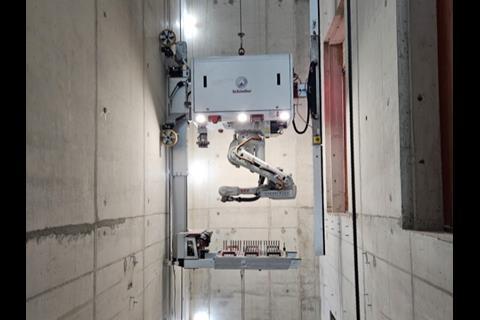
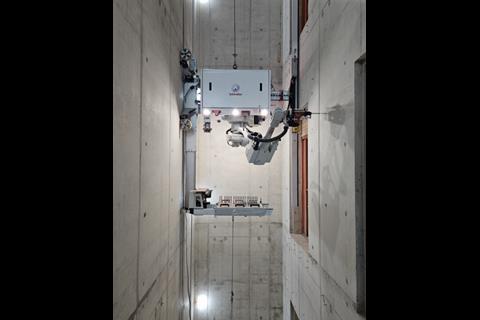
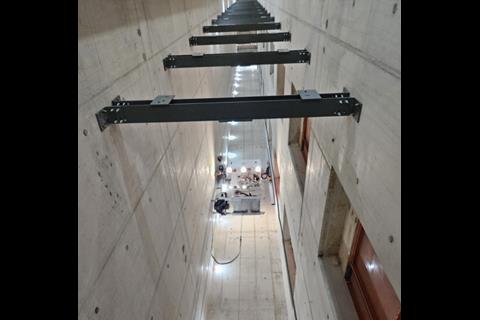
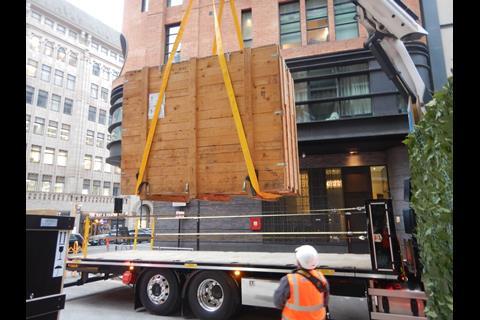
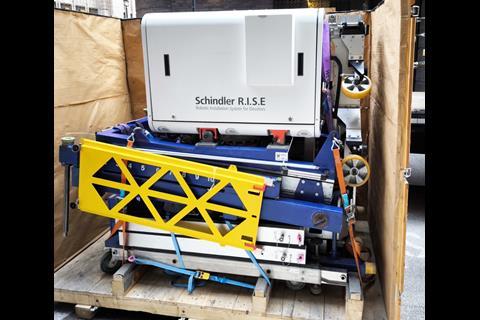
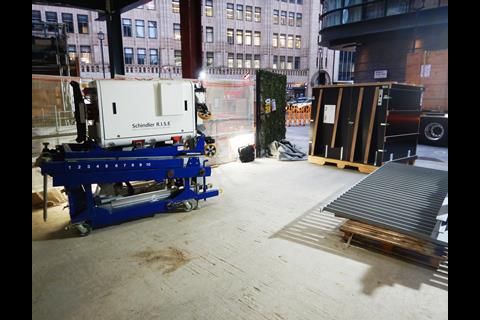
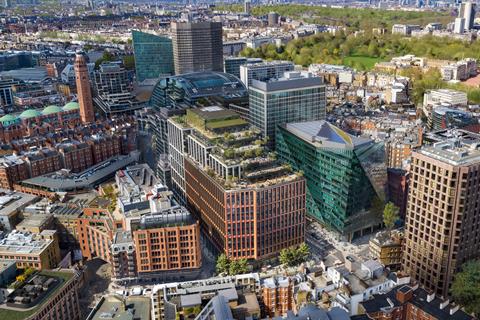

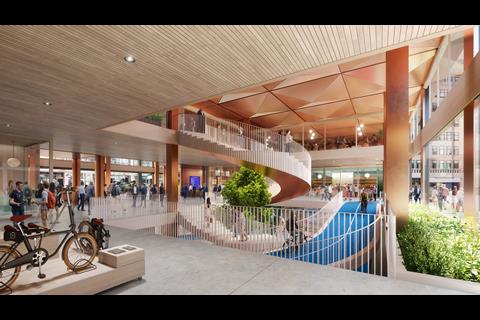







No comments yet